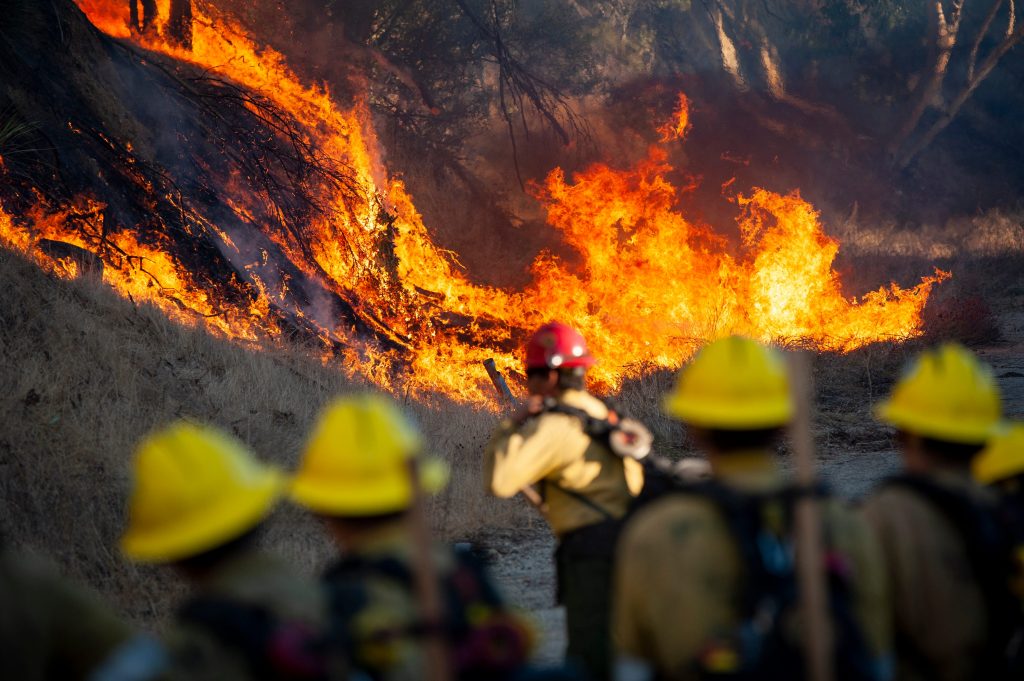Dozens of forest fires have raged through forest areas across northern Algeria. So far at least 90 people have reportedly died as a consequence. Natural hazard expert, António Bento-Gonçalves, provides insights into wildfires in Algeria and what must be done to manage them better.

How often do wildfire incidents take place in Algeria and which areas are most affected?
In recent years major fires, with devastating consequences, have occurred in various parts of the world. This year the Mediterranean region was affected by heatwaves between July and August which caused major fire incidents in several countries including Greece, Turkey, Tunisia, Morocco and Algeria.
I’ve carried out research on wildfires in Algeria and looked into what causes them.
In Algeria, forests and scrubland occupy a total area of around 4 million hectares. This makes a huge part of the country susceptible to fire. For instance, between 1876 and 2005 (the longest complete data series) it’s estimated that almost 40,000 hectares burned each year, representing approximately 1% of all existing woodlands of the country.
Over a period of 25 years, from 1985 to 2010, Algeria recorded 42,555 fires that burned a total area of 910,640 hectares.
The municipalities (known as “wilayas”) most affected are in the North – the most forested parts of the country – and in the West. These areas are more populated, hilly (with steep slopes) and a pronounced Mediterranean climate – a very dry and hot season in summer, but sufficiently wet in winter to allow for rapid vegetation growth.
What causes them?
Wild fires spread the fastest in places that are hard to reach and in the right conditions. Large parts of Algeria tick these boxes. With very limited access and steep slopes, detection and effective first intervention by firefighters is very difficult. In addition there’s usually very dry undergrowth and forests are composed of flammable species.
Added to this, Algeria’s forested areas are subject to multiple human pressures which create conditions that are favourable to the spread of fires. These include the use of fast-growing but more flammable forest species or the frequent use of fire for pasture regeneration. In addition, having long periods of hot and dry weather increase fire risk.
Forest fires in Algeria were historically caused by people. However, recent official information on the causes of fires is characterised by high rate of fires of “unknown origin”, representing between 40% to 70% of all fires. Essentially, we know they’ll be caused by people, but there’s no specific data on what activity caused them or the motivations behind them.
Why do we not know? This is related to difficulties in monitoring by the General Directorate of Forests. Between 1980 and 2000, when the causes of fires of unknown origin were higher, this was due to instability. Algeria had a civil war that lasted from 1991 to 2002 and prevented government agencies, including the Directorate of Forests, from working properly. This made it difficult to have a good understanding of what caused the fires.
How are they managed and are there prevention measures in place?
Generally, policies put in place to combat forest fires are organised around several points: information and education of the population, development and maintenance of rural and forest areas, surveillance of wooded areas, and improvement of the means of fire fighting.
However, not knowing exactly what type of human activity causes the fires limits what can be done to prevent them. Instead, policies tend to be more reactionary – they focus on dealing with fires when they break out.
In recent years, public authorities strengthened the resources of the General Directorate of Forests for the prevention and fight against forest fires. In particular, by acquiring first intervention equipment, such as forest fire trucks, preparing more aircraft for firefighting, and a radio network for rapid communication in the event of fire outbreak.
In addition, more collaborative work is being done in the region to improve intervention and surveillance.
What else can be done to better prepare and manage wildfires in Algeria?
Policies to prevent and protect against forest fires have been implemented gradually since the 1980s, but the country faces many challenges in effectively rolling them out.
Algeria is a huge country – with a size exceeding 2.38 million km2, it’s the biggest country in Africa. With a massive territory to manage, all actions – to prevent, to detect and to fire fight – aren’t enough. Operations are also very complex due to the very uneven, hard to access, terrain.
There’s also a high population density around and inside the forest massifs. This means its hard to control the actions that people take which are a fire hazard.
Added to this, forestry officials lack authority and resources to perform their duties.
To effectively combat fires, there must be political, social and economic stability in the country. And the causes of the fires must be clearly known. Without this, it’s impossible to win the battle against forest fires.
There is, however, hope. New technologies, such as Remote Sensing and Geographic Information Systems, could improve data acquisition and thus the prevention of fires.
Other actions that must be taken include; the strengthening of education and awareness-raising and improvements in the equipment used to monitor, detect and fight forest fires.
Finally, policymakers must focus on strengthening cooperation and mutual assistance between all the Mediterranean countries. Fire knows no borders and no single country is capable of having all the necessary resources.

